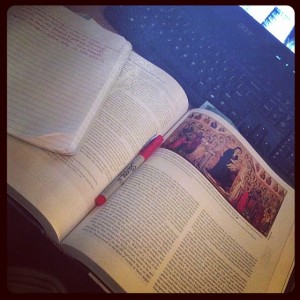
In the pursuit of forming a testimony many people come across questions—sometimes challenging questions. Historical evidence of the LDS Church has raised questions, which can lead to doubt. Michael A. Goodman, BYU religion professor, taught a series of classes held at the Campus Education Week on how to seek truth by working through these doubts and questions.
History is often used as evidence to prove both the truth and the falsity of the church. But, historical claims can be misleading.
Changes in policy over time have lead to doubts concerning the doctrine of the LDS Church. But differentiating between doctrine and practices is important, Goodman said.
Distinguishing what is true LDS doctrine is key to gaining a testimony, Goodman said. Without this core knowledge people can become skeptical, which leads to doubt.
LDS doctrine can be identified by three set characteristics, according to Goodman. LDS doctrine is eternal—it does not change as some church policies have over time and under different leadership. An example is President Thomas S. Monson’s policy to lower the mission age in 2012, Goodman said.
Secondly, LDS doctrine is salvific—meaning doctrine is essential to our salvation. And, thirdly, LDS doctrine comes from the united voice of the First Presidency and the Quorum of the Twelve.
Using historical evidence alone is a weak reason to believe in the existence of God, according to Goodman. A testimony based on doctrine is less likely to be swayed by what one person may say than one based on historical data.
History certainly has its place, but without even basic knowledge of how to interpret historical evidence, it’s hard to use accurately, Goodman said.
Goodman warned that a simple Google-search of LDS history would never give an accurate depiction. Without proper context, historical evidence loses reliability.
Bias also clouds the lens by which people view and interpret information. No matter what a person’s religious background or beliefs are, confirmation bias is a universal dilemma.
Confirmation bias is the tendency to accept information that is in line with already established beliefs or preconceptions. Simply put, whatever people want to believe from what they are studying is exactly what they will get, unless they make a conscious effort to be open-minded, Goodman said.
But historical evidence can be a source of spiritual strength, when used intelligently and accurately.
“My testimony of the gospel is stronger and not weaker as a result,” Goodman said. “It doesn’t take a Ph.D to do it.”
By combining spiritual knowledge and historical evidence, one can overcome doubts and gain a firm testimony.
“Both have to be a part of the story if God is real—and he is,” Goodman said.




